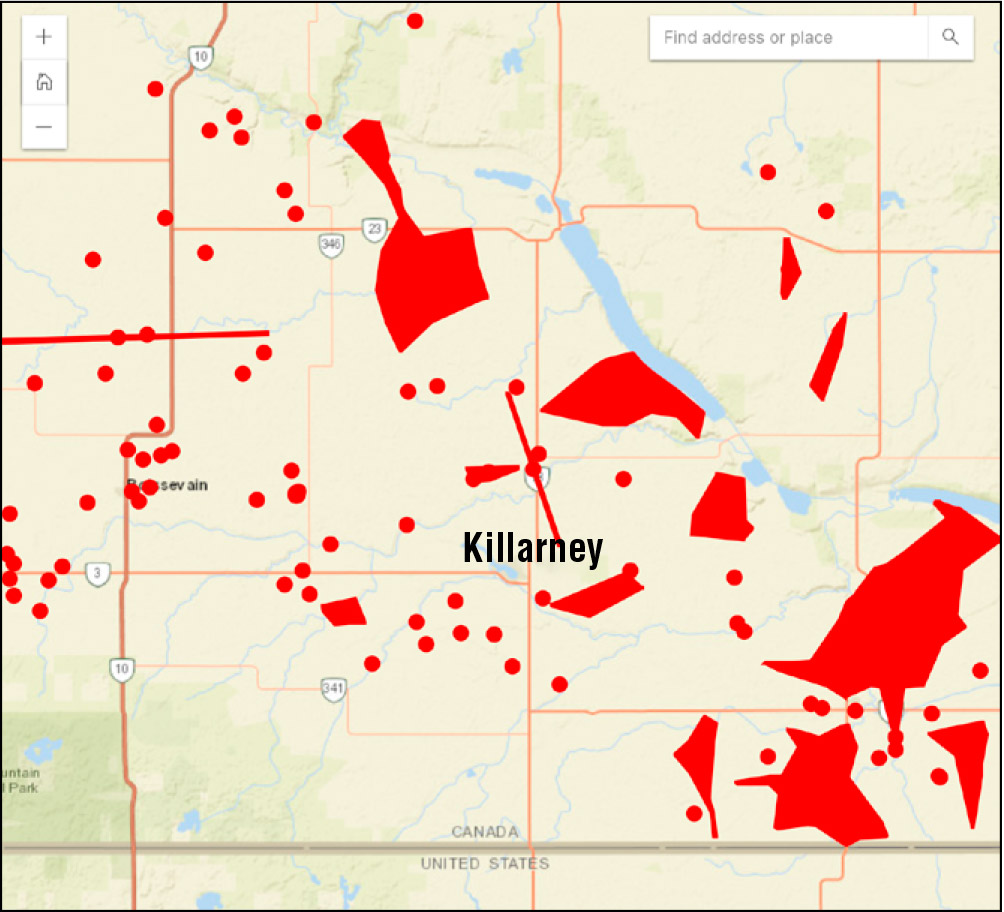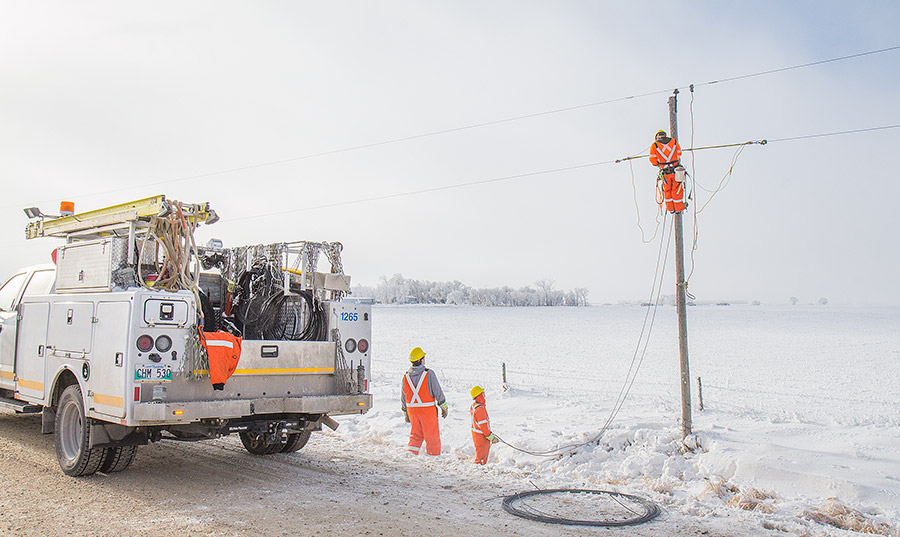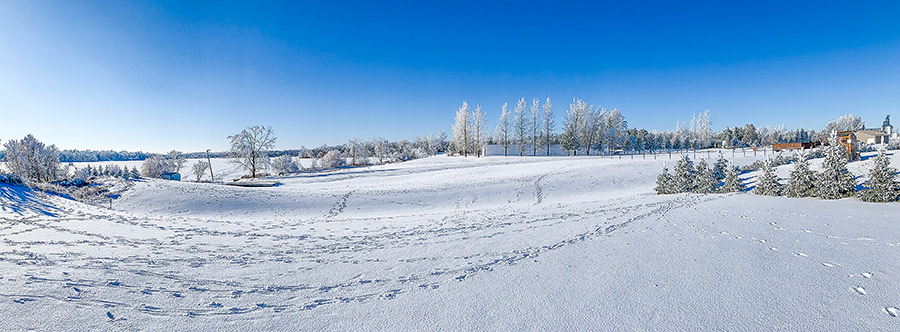
Hundreds of Hydro customers left in the dark as power lines snap and collapse
BY KIM LANGEN
It was beautiful, and magical, and it caused mayhem on the power lines.
The pointed spurs of sparkling hoarfrost first began to grow on trees, fences, and bushes – and on power lines – late last week, following the onset of overcast, cold weather.
And as the moist weather continued, the crystals just kept growing.
By Saturday afternoon, power lines in a large area in the central/southwest of the province – including Killarney – had become heavily entombed by the twinkling hoarfrost.
And after a number of fits and starts on Saturday, the power finally went off late that night, and stayed off, in many areas.
Manitoba Hydro later reported that several hundred customers, possibly thousands, had lost their service, throughout some 22 areas and communities.
The Municipality of Cartwright-Roblin was hardest hit, with 207 customers reported on the weekend to be fumbling around in the dark with flashlights and candles, and many in the rural areas struggling to supply water to corralled livestock.
Killarney-Turtle Mountain was the second-most affected, with 76 customers affected by the outages.
Manitoba Hydro soon began to marshal a number of employees from around the province to come and help restore power to the stricken areas.
“We drove to Brandon last night from the Stonewall area, and spent the night there,” said the foreman of a MB Hydro crew, which was working near the intersection of Hwy. 3 and Provincial Trunk Highway #458 at around noon on Monday. “We drove down here early this morning, and we’ve been busy de-icing the lines with the ice roller, and reconnecting the broken ones,” he said.
The damaged lines were first made safe by installing an isolating device on the power line itself, connected by a chain, to earth the power, he said.
Another crew, ahead of him and his team, had been working with an ice roller to remove the ice from the line, accessing it either from the road or within a field, to knock it down, he said.
Now clear and safe, his crew was able to repair and reconnect the line, and finally restore service to customers relying on that stretch of power line.
“What we need is a bit more of him,” he said, pointing to the sun, which was just beginning to come out in the south, and would help to melt the frozen, bulging Hydro lines.
Later, while driving west in brilliant sunlight on the #3, the heavy, slumping lines of electric cable – still thick with the white hoarfrost and ice – had begun to sway and swing, as little by little long strands of the ice casements began to fall, and tension reduced on the line.
By 5 p.m. Monday, many customers were expected to be back in business, with power supply finally restored to homes and farms and businesses.
But the show wasn’t over yet.
On Wednesday, December 5, the MB Hydro website reported that 232 customers were still without power, 85 of them in the Killarney-Turtle Mountain area, and 110 of them in the Lorne area.
Power was also off temporarily that day, for about an hour in a large area, as a big Hydro crew worked on a transformer located south of Killarney.
By Thursday, all power appeared to be restored to the entire southern part of the province, according to MB Hydro’s ‘Power Outages’ map on their website.


How do Hydro employees get the ice off the line?
They use a technique called ‘ice rolling’.
Ice rolling involves attaching a roller to the end of a long pole or rope, which is then hung onto a conductor.
In windy or wet weather, the power is turned off. In some weather conditions, it can be left on.
“We pull the roller along the power line, cracking the ice off as it goes,” said Hydro. “This is a manual procedure, often done in freezing rain and storm conditions. A 10-person crew can de-ice roughly 1.6 km of line per hour.”
Rolling is done when melting is not an option.

What is hoarfrost?
Hoarfrost is the deposit of ice crystals on objects exposed to the free air, such as grass blades, tree branches, or leaves.
It is formed by direct condensation of water vapour to ice at temperatures below freezing, and occurs when air is brought to its frost point by cooling.
More frosty scenery and new aeration location



